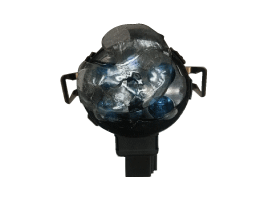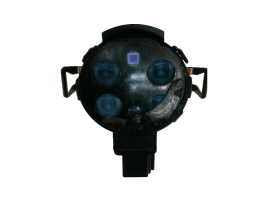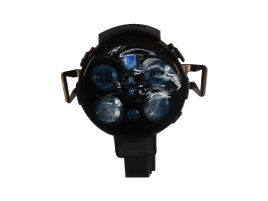Hyundai i-30: Windshield Wiper/Washer / Rain Sensor
Components and components location
| Components and Components
Location |
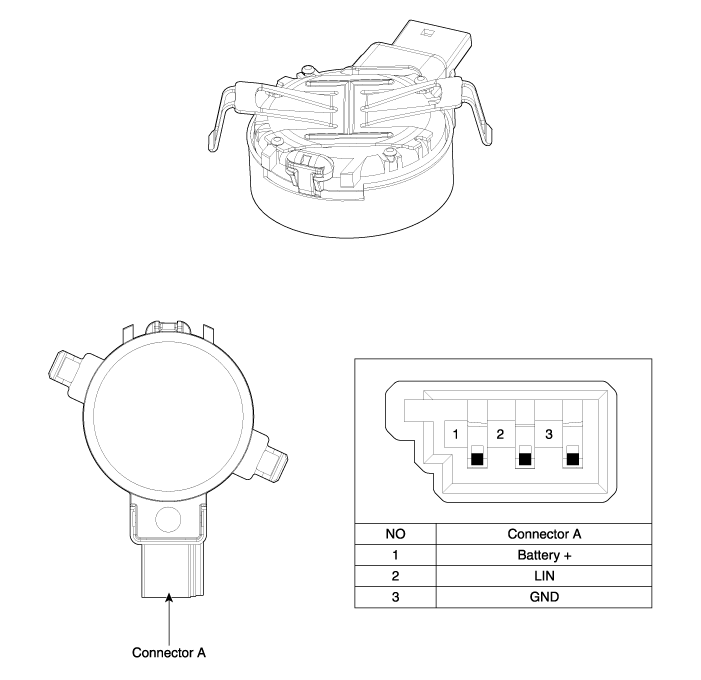
Schematic diagrams
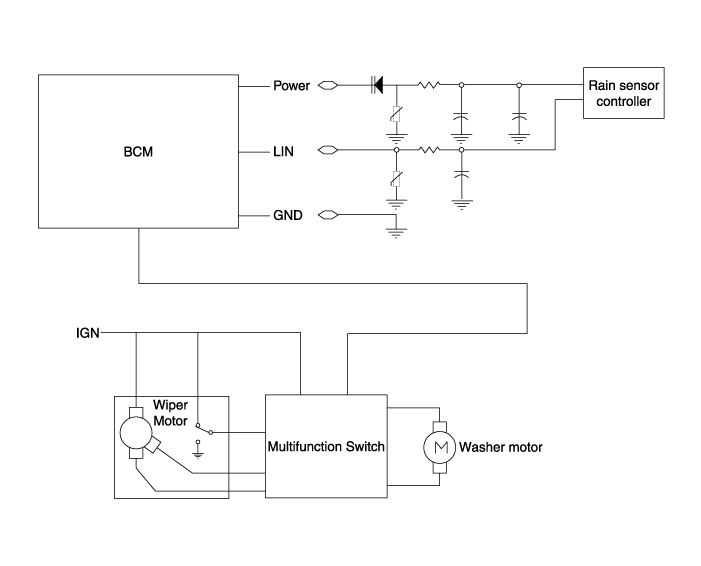
Description and operation
Integrated rain sensor (A) controls three systems: front wiper, auto-light,
and central air conditioner.
|
1. |
Wiper Control System
When "AUTO" switch signal is received from the multi-function switch
on the right, the integrated rain sensor detects the amount of rainfall.
The sensor is installed inside the upper part of the front window for
wiper motor control.
This system automatically controls the operation duration and speed
of the wiper depending on the measured amount of rainfall even if the
driver does not operate the wiper switch.
|
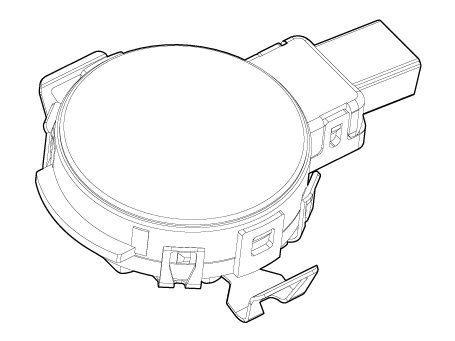
| Functions and Operating
Principles |
Basic Principle
|
1. |
Detecting the amount of rainfall
The light (beam) emitted from light emitting diodes (LED) is totally
reflected on the external surface of the windshield and comes back to
the photo diodes. When there is water on the external surface of the
windshield, the light is optically separated and reflected partially
and the remaining brightness is measured by the photo diodes. Water
remaining on the windshield results in the light being not totally reflected.
The loss of brightness due to this indicates how much the glass surface
is wet.
|
Interference
Rain sensor might malfunction due to the interferences listed below.
|
1. |
Dust on the measuring surface and other surfaces on the light path (surface
of light emitting diodes and photo diodes, fiber optics, bracket, and
glass surface of windshield joint area) weakens the received light.
|
|
2. |
Movement of windshield and bracket
|
|
3. |
Movement of bracket due to vibration
|
| •
|
When the integrated rain sensor does not operate or malfunctions,
the driver should operate the wiper switch manually.
|
|
Automatic Operation
|
1. |
Operational status of rain sensor
Operation Mode
|
Operation
|
Direct Mode
|
It is the normal operational status of the integrated rain sensor
when the wiper switch is in "Auto" and the sensor detected dry windshield.
Based on this state, integrated rain sensor determines the operation
mode of wiper depending on the rainfall and its duration.
|
Intermittent Mode
|
Integrated rain sensor activates the intermittent mode when wiper
operation is done successively more than twice with a pause of 0.5
- 5 seconds.
|
Low Speed
|
The wiper operates continuously in low speed
|
High Speed
|
The wiper operates continuously in high speed
|
|
Safety Function
|
1. |
When there is ice or foreign substance in the detecting area, integrated
rain sensor cannot recognize the condition for operation correctly.
|
Detecting Special Conditions
|
1. |
Rain sensor
Special Condition
|
Operation based on special conditions detecting
|
Splash
|
When integrated rain sensor detects a high level of water (splash)
in Direct or Intermittent mode, the system switches from Park to
High speed. Then, wiping is done once in High speed and once more
in Low speed. If the condition of rainfall does not change after
wiping, it returns to the original condition (Direct or Intermittent).
|
Smearing
|
Smearing is a thin oil film that has dried fast and occurs when
a small amount ofraindrops is wiped by a dirty or worn-out wiper
blade. Operational signal should not be issued when smearing occurs
in Direct or Intermittent mode.
|
Dirt
|
When no change is detected after wiping, integrated rain sensor
determines that the windshield is dirty. In this state, operational
signal should not be issued. If the windshield becomes clean (for
example, by washer fluid), the integrated rain sensor returns to
the normal condition.
|
Washer fluid
|
Integrated rain sensor does not respond to the washer fluid during
the Washer mode. In other words, wiping speed does not change even
if the washer fluid is sprayed (automatic operation of the washer
pump is not reflected in the functioning of integrated rain sensor).
|
|
Repair procedures
| •
|
The dust or foreign substance on the rain sensor has a bad effect
upon the rain sensor capability,so protect the sensor surface
with protection cover until installing the rain sensor to bracket
for accurate function.
|
| •
|
The coupling pad on the rain sensor surface has adhesive strength,
so the coupling pad could stick to the windshield depending
on the surrounding conditions during the using time.
|
| •
|
If the rain sensor is removed by force, it could be damaged.
So make sure to separate the rain sensor from the windshield
carefully.
|
|
|
1. |
Remove the rain sensor cover (A).
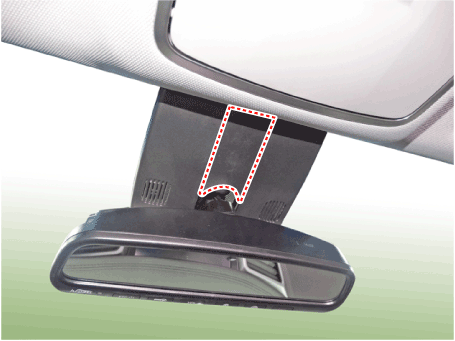
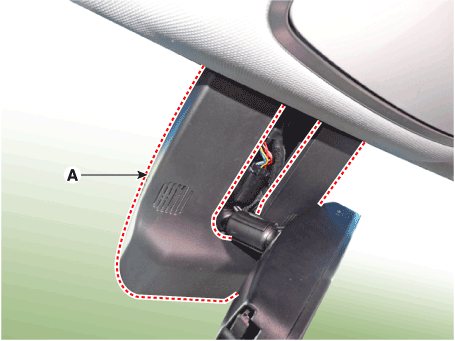
|
|
2. |
Disconnect the wiring harness connector (A).
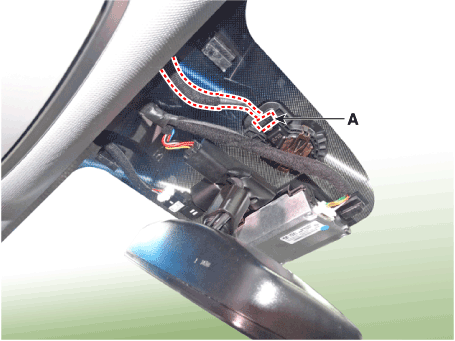
|
|
3. |
Be careful not to damage the cover latch by applying excessive force.
To remove the bracket, pull the holes of the bracket outside using a
small flat-head screwdriver (A).
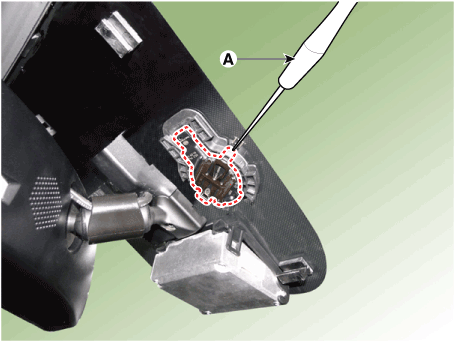
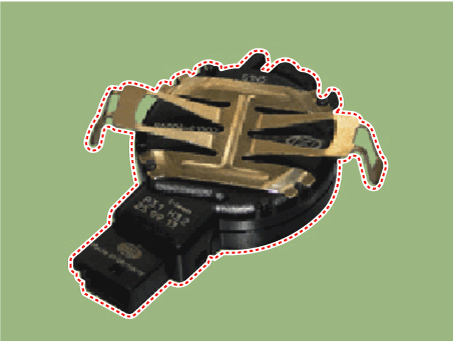
|
|
4. |
Rain sensor module is attached to the front windshield by glue. When
replacing the front windshield, remove the rains sensor module form
the existing front windshield and install it on the new front windshield.
|
| •
|
Check the operation of the rain sensor and the light sensor
before mounting.
|
| –
|
Check the sensor for silicon damage.
|
| –
|
Check whether the rain sensor connector is tightened.
|
| –
|
Check whether the rain sensor and bracket are properly tightened.
|
| –
|
Check whether the sensor mounted area is free from foreign matters.
|
| –
|
Recalibrate sensitivity of the swtich if the auto-wiping operation
is insensitivity or too much sensitive.

|
| •
|
In case the silicone of the rain sensor is normal or slightly
damaged as shown in the below images, it can be reused.
Normal
|
Damage within 1.5 mm of outer part
|
|
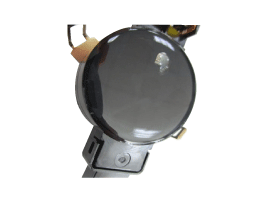
|
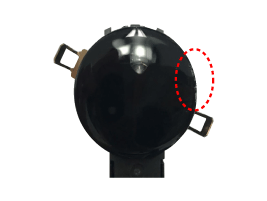
|
|
| •
|
In case the silicone of the rain sensor is damaged as shown
in the below images, it should be replaced with a new silicone.
Foreign substances
|
Fingerprint
|
Damege
|
|
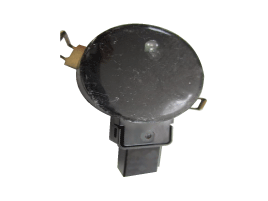
|
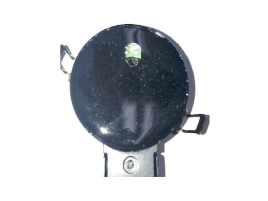
|
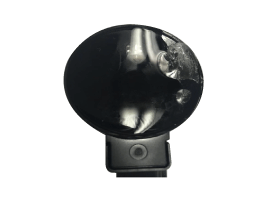
|
|
| •
|
In case the silicone of the rain sensor is damaged it should
be replaced it as shown below.
1) Remove the damaged silicone gel pad from the lens plate completely.
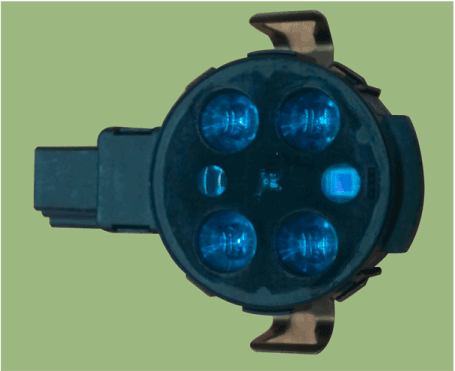
|
• |
Be careful not to damage or contaminate the
surface of the lens plate during removal.
|
|
2) Attach the new silicone gel pad aftet removing the silicone
paper (A) then remove the transperent film (B).
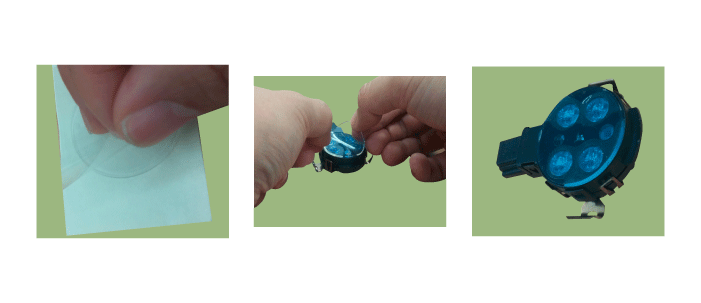
|
• |
When attaching the silicone gel pad to the sensor,
be careful not to contaminate
|
|
|
| •
|
It is very important that the silicon (coupling pad) is completely
pushed against the windshield and stuck without any air bubble.
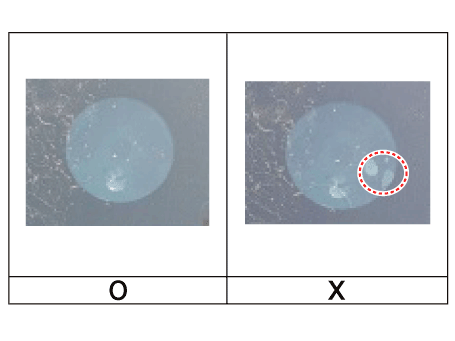
|
| •
|
In case of replacing the damaged windshield, you may reuse the
undamaged exisitng rain sensor.
|
| •
|
The windshield glass has to be clean and free of contamination
or foreign substances.
|
|
|
1. |
Connect the rain sensor connector.
|
|
2. |
Push one of the latch of spring arm (A) down until it snaps and you
hear a click sound.
And then push the latch of second spring arm (B) for keeping the sensor
in right position.
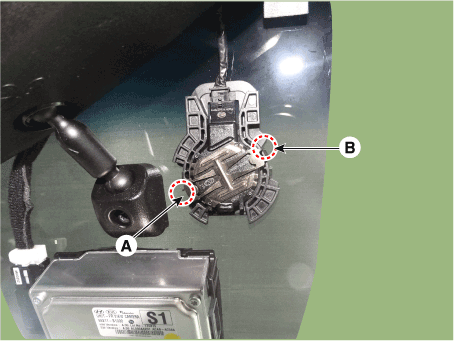
|
• |
Do not snap both spring arms at the same time.
|
|
• |
An incorrectly mounted snap connection may cause malfunctions
of the rain/light sensor.
|
|
|
Repair procedures
Removal
Head Lamp Washer Motor
•
When servicing the washer pump, be careful not to damage the
washer pump seal...
Other information:
[A] : Blind spot area
[B] : Closing at high speed
The Blind-spot Collision Warning
(BCW) system uses radar sensors in
the rear bumper to monitor and warn
the driver of an approaching vehicle
in the driver's blind spot area.
The system monitors the rear area of
the vehicle and provides information
to the driver with an audible alert and
an indicator on the outside rearview
mirrors...
Components and components location
Component Location
1. Tail Gate
assembly
Repair procedures
Replacement
•
Wear gloves to protect hands from injury...
Categories
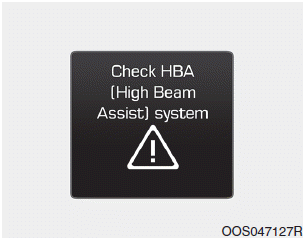
When the High Beam Assist (HBA)
System is not working properly, the
warning message will come on for a
few second. After the message disappears,
the master warning light ( )
will illuminate.
)
will illuminate.
read more



 Head Lamp Washer Motor
Head Lamp Washer Motor
 )
will illuminate.
)
will illuminate.













